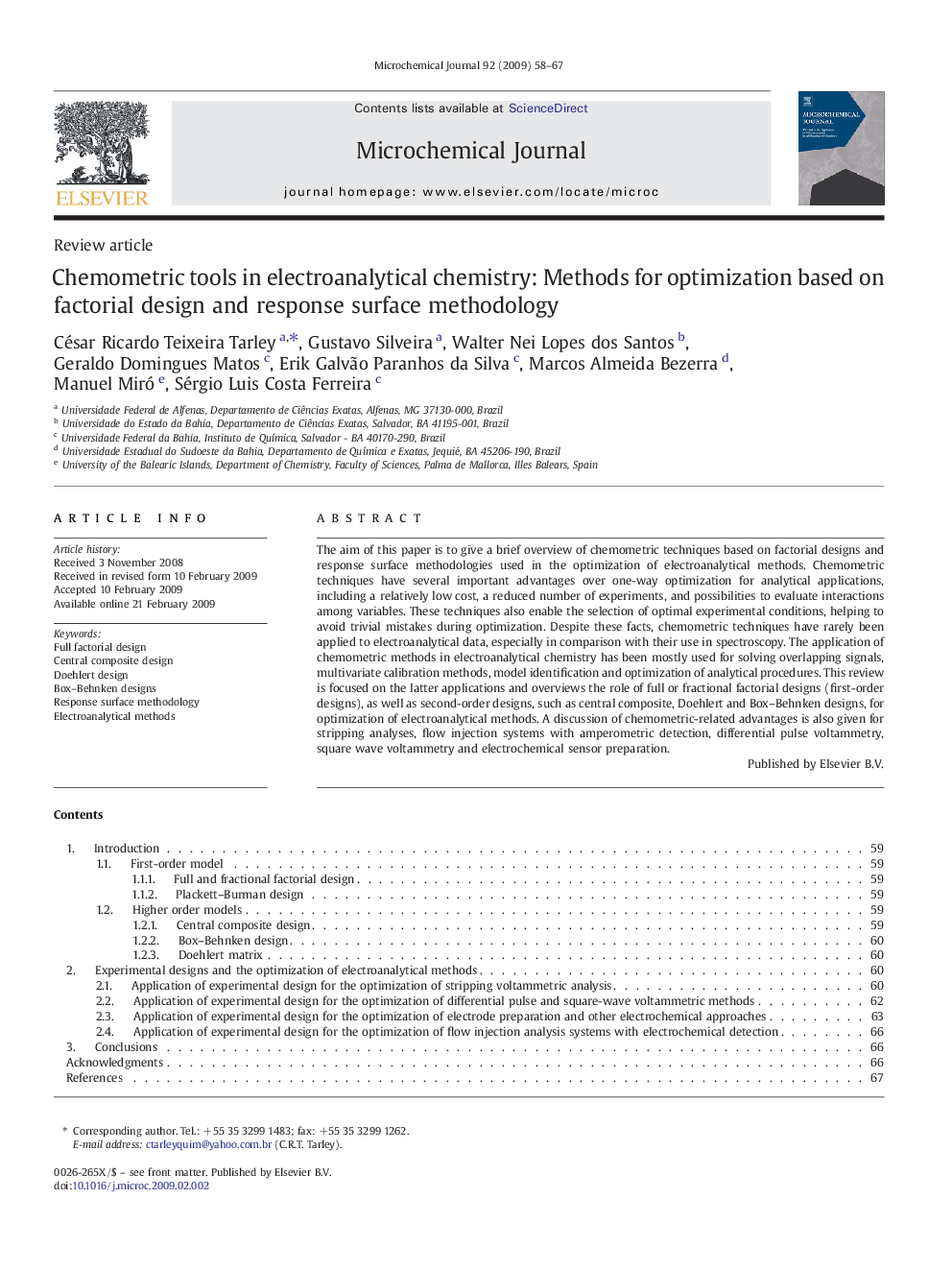| Article ID | Journal | Published Year | Pages | File Type |
|---|---|---|---|---|
| 1228563 | Microchemical Journal | 2009 | 10 Pages |
The aim of this paper is to give a brief overview of chemometric techniques based on factorial designs and response surface methodologies used in the optimization of electroanalytical methods. Chemometric techniques have several important advantages over one-way optimization for analytical applications, including a relatively low cost, a reduced number of experiments, and possibilities to evaluate interactions among variables. These techniques also enable the selection of optimal experimental conditions, helping to avoid trivial mistakes during optimization. Despite these facts, chemometric techniques have rarely been applied to electroanalytical data, especially in comparison with their use in spectroscopy. The application of chemometric methods in electroanalytical chemistry has been mostly used for solving overlapping signals, multivariate calibration methods, model identification and optimization of analytical procedures. This review is focused on the latter applications and overviews the role of full or fractional factorial designs (first-order designs), as well as second-order designs, such as central composite, Doehlert and Box–Behnken designs, for optimization of electroanalytical methods. A discussion of chemometric-related advantages is also given for stripping analyses, flow injection systems with amperometric detection, differential pulse voltammetry, square wave voltammetry and electrochemical sensor preparation.
